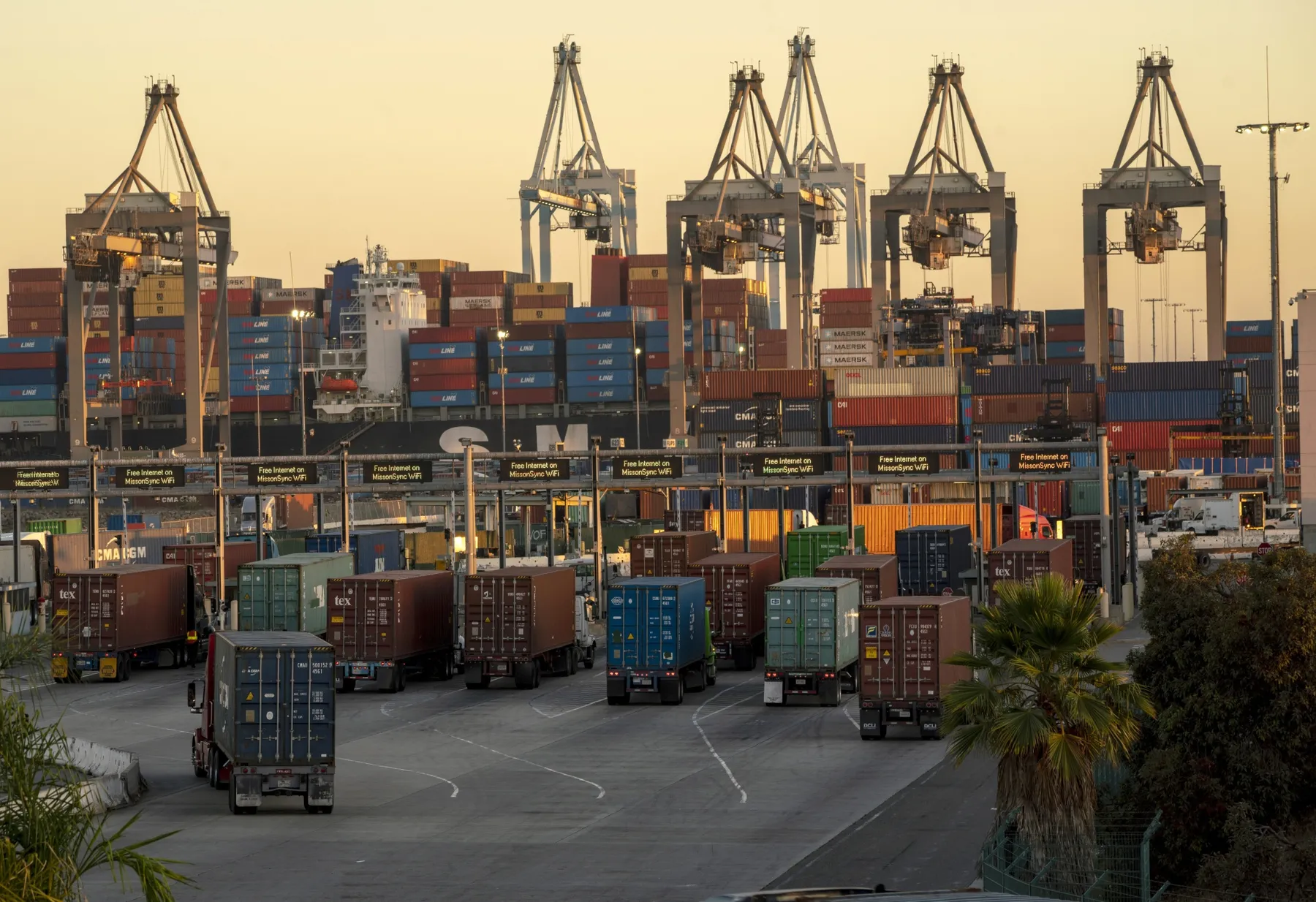Amid rising tariffs, US container ports are expected to see a steady drop in import cargo volumes through the end of this year, following what was nearly a record-setting summer, according to the nation’s largest retailers.
In July, major US container ports handled 2.36 million twenty-foot equivalent units (TEUs), the standard measure for cargo volume, according to the National Retail Federation’s (NRF) Global Port Tracker. That was a sharp 20.1% increase from June, as retailers rushed to bring in goods before new tariffs took effect in August. Compared to the previous year, July was 1.8% higher and marked the second-busiest month since 2.4 million TEUs in May 2022.
Jonathan Gold, NRF’s Vice President for Supply Chain and Customs Policy, explained that tariffs have expanded beyond the earlier 10% level to much higher rates across many countries. These increases have spread across industries, affecting a wide range of products. To protect themselves, retailers have tried to stock up as much as possible before tariffs rise again. But Gold noted that the unpredictable US trade policies are preventing businesses from making the kind of long-term plans they need for growth. He warned that these disruptions are already raising costs, which will eventually lead to higher prices for American consumers.
The legal and political backdrop remains unsettled. In August, a federal appeals court ruled against former President Donald Trump’s use of the International Emergency Economic Powers Act (IEEPA) to impose tariffs. However, those tariffs are still in place while the case moves quickly toward the Supreme Court. Trump also delayed higher tariffs on China by 90 days, pushing the deadline to November 10 to give negotiations more time. India, however, faced a harsher outcome, Trump announced a new 25% tariff, doubling the country’s rate to 50%.
The NRF estimated August cargo volume at 2.28 million TEUs, down 1.7% year-over-year, but still above the 2.2 million TEUs that had been expected before the changes with China and India. Looking ahead, the NRF forecasts that cargo volume will reach 2.12 million TEUs in September, a decline of 6.8% year-over-year. In October, volume is expected to fall further to 1.95 million TEUs, down 13.2% from last year. By November, imports are projected to drop to 1.74 million TEUs, a decrease of 19.7%. Finally, in December, cargo volume is expected to hit just 1.7 million TEUs, down 20.1% and marking the slowest month since March 2023, when ports handled 1.62 million TEUs.
The slowdown is not only tariff-driven but also linked to an early shipping peak and frontloading of goods ahead of a potential East Coast dockworker strike later in 2024. Through the first half of the year, ports handled 12.53 million TEUs, up 3.6% year-over-year. But for the full year, volumes are projected to total 24.7 million TEUs, which is down 3.4% compared with 25.5 million TEUs in 2024. Looking further ahead, January 2026 traffic is expected to reach 1.8 million TEUs, a sharp 19.1% decline from the same month a year earlier.
While retailers initially boosted imports to stay ahead of tariff hikes, this frontloading has created an artificial summer peak that will give way to significant declines in the months ahead. The steep year-over-year drops projected for October through December highlight how tariffs and trade uncertainty are cooling demand and disrupting supply chains. At the same time, the looming risk of labor disputes adds another layer of instability.
In the bigger picture, these trends show the vulnerability of US supply chains to both policy decisions and geopolitical tensions. Higher costs from tariffs are already filtering down to businesses and consumers, suggesting that the US retail sector will face higher prices, tighter margins, and weaker volumes heading into 2026. Unless trade policies stabilize and labor disruptions are avoided, the shipping industry and broader economy could experience continued volatility well into the next year.




